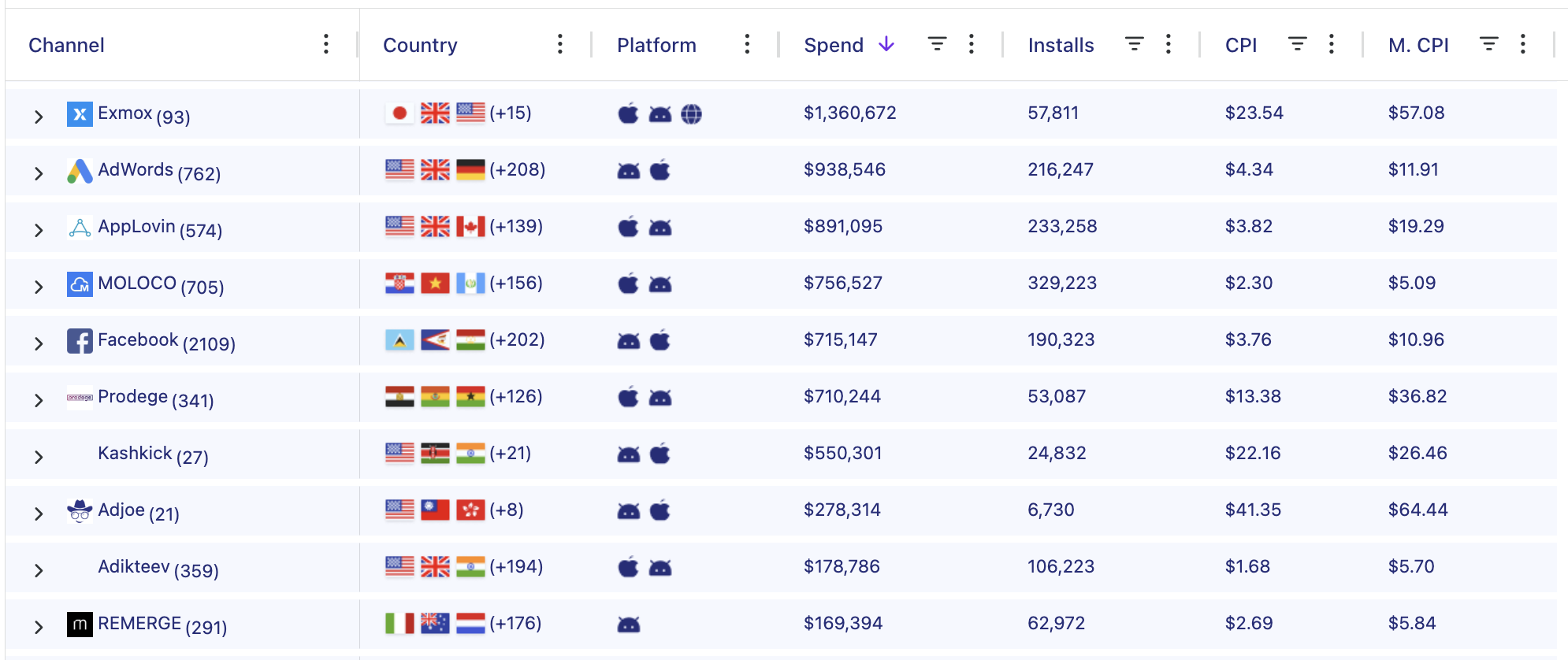In the cutthroat world of performance marketing, advertisers are always hunting for the next big growth hack. Enter incentivized inventory—a dreamland of seemingly unbeatable KPIs, sky-high conversion rates, and new users flowing in like a broken faucet. It looks like magic. It is magic. And, just like most magician’s trick, some of it might just be an illusion.
Because here’s the dirty little secret no one wants to talk about: many of the rewarded offers care about what users do with the first 90 days of install date. But then when day 91 comes, many of the users disappear, taking your ad dollars and your inflated ROAS with them.
This isn’t just an outlier phenomenon — it’s an inherent flaw in incentivized advertising campaigns, mostly done naively believing that by getting rewarded for 90 days, users would develop loyalty and stick around minus the incentive on day 91 onwards. And if you’re not careful, it could be eating up your budget while delivering nothing of real value.
The seduction of incentivized ads
Let’s break it down: Incentivized ad platforms reward users for completing “tasks,” like:
- Installing an app in exchange for in-game currency
- Subscribing to a service for bonus points
- Watching an ad for extra content
These mechanics live inside rewarded ad networks, offerwalls, and play-to-earn ecosystems, where users complete actions for benefits that have nothing to do with the product they’re engaging with. The results? Absolutely stunning on the surface.
- Insane conversion rates – 5X-10X higher than standard ad inventory
- Ridiculously low CPAs – User acquisition cost appears to be a fraction of regular channels
- Surging installs, sign-ups, and trials – Your dashboard turns into a fireworks display
This all makes incentivized ads a favorite among aggressive growth marketers, especially in industries like gaming, fintech, streaming, and subscription services. But if you’ve been in the game long enough, you know the golden rule: if it looks too good to be true, it probably is.
What happens on day 91? (spoiler: often nothing.)
Marketers tracking short-term KPIs might be fooled into thinking they’ve struck gold. But what happens after the reward dries up?
For most incentivized users, the answer is simple: they disappear.
- Retention rates plummet—often by 80%-90% within three months
- LTV flatlines—many users never even reach their first payment cycle
- ROI tanks—any upfront performance lift is wiped out when post-incentive churn kicks in
In other words, your “new customers” were never real customers to begin with. They were just there for the freebie.

The economy of rewarded advertising
There’s a reason most some companies avoid incentivized inventory completely, or use it very carefully, and only at the edges of their marketing budget. Let’s break it down:
- Knowingly inflated metrics
Incentivized users distort your acquisition data, making it look like your campaign is performing far better than it actually is. This makes it harder to optimize your real channels. - Wasted ad spend
If your goal is to acquire loyal, paying users, then spending on incentivized inventory is like buying Ferrari-branded go-karts. Looks cool, doesn’t actually go anywhere. - Misleading LTV models
Many brands use early-stage behavior to predict lifetime value. But when that early-stage behavior is entirely artificial, your LTV forecasts are worthless. - Zero organic lift
A great acquisition channel doesn’t just drive direct conversions—it also sparks organic growth. Incentivized traffic does the opposite, creating a vacuum where users churn before they ever engage organically.
Do incentivized ads ever make sense?
There are exceptions where rewarded advertising can be used strategically—if you know exactly what you’re doing:
- Monetization via ad revenue
If you’re running a free-to-play game or an ad-supported platform, you might not care about retention or purchases. You just need people to watch ads, and rewarded traffic can inflate your performance and engagement rates (albeit artificially). - Short-term volume plays
We can’t deny the fact that rewarded and incentivized inventory is an AWESOME HACK if you really need to grow fast. If you need to show explosive growth for an investor pitch, an app ranking boost, or a PR stunt, incentivized installs can temporarily juice your numbers. Just don’t mistake this for actual business success.
If you are a company acquiring a company that’s been investing heavily in rewarded – you should really scrutinize the cohort analysis and follow the patterns of rewarded driven users vs. the organics. Come cohort d91 – don’t be surprised to see performance metrics falling off a cliff.

How to hedge against the rewarded d90 drop off
If you want to avoid burning your budget on users who evaporate in 90 days, follow these golden rules:
- Track beyond the initial conversion
Look at post-install behavior over at least 90 days. If your retention curve falls off a cliff after Day 30, you’ve got a problem. - Segment and compare users
Analyze performance differences between incentivized vs. non-incentivized cohorts. If one group churns at an extreme rate, you know where the problem lies. - DIVERSIFY
For the love of god and all that is mighty – rewarded and incentivized should not represent more than 10% of your advertising spend if your monetization is based on purchases and IAP. If you monetize only with ads – go wild – but if you rely on users retaining over d90 – invest your time and efforts on channels that do not reward for action.

If that is not possible – your product is not marketable yet. Fix your product first. Market your product later. - Track chargebacks and refunds
The CTO and co-founder of Adjoe wrote a very important blog post about the dangers of buying rewarded inventory without closing the full loop of tracking chargebacks and/or refunds. https://adjoe.io/blog/new-fraud-threat-in-rewarded-ua-what-you-need-to-know/ . In a nutshell – what the article and research state is that certain publishers may be exploiting in-app purchase (IAP) reward campaigns by making legitimate purchases to earn rewards and then requesting refunds, leaving advertisers to bear the costs of these conversions. - Measure incrementality
Instead of just looking at last-click conversions, use incrementality measurement to see whether incentivized traffic is actually driving real business growth. If INCRMNTAL detects that your ad spend is cannibalizing organic users—or worse, driving zero real impact—you know it’s time to do something.

- Optimize for Quality, Not Quantity
A thousand high-value users beat a million churn-prone users every time. Focus on channels that drive long-term engagement, even if they look less flashy in the short term.
Growth at any cost is a myth
Incentivized advertising is like junk food—cheap, addictive, and ultimately bad for your long-term health. Sure, it might feel great to see a surge in installs or sign-ups, but if those users are gone in 90 days, what’s the point?
The best brands aren’t just chasing vanity growth—they’re building real, sustainable businesses. And that means prioritizing channels that deliver true customer engagement, not just an illusion of success.
So before you dump more budget into incentivized inventory, ask yourself: Are you building a business, or are you just buying numbers?




